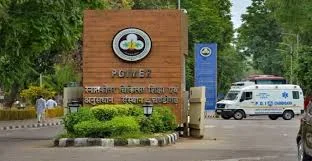Chandigarh, July 30 — Residents struggling with daily traffic congestion between the Post Graduate Institute of Medical Education and Research (PGIMER) and Sarangpur can finally expect relief, as the Chandigarh Heritage Committee has cleared the proposed flyover on this key stretch.
This marks the second flyover project approved for the city, following the Tribune Flyover, which recently received an in-principle nod from the Central Government.
Confirming the development, UT chief engineer C.B. Ojha said, “The heritage panel has granted its approval for the PGIMER-Sarangpur flyover. We are now waiting for the official minutes of the meeting. Once we get it, we will float the tenders for the project.”
According to engineering department officials, the tendering and project allotment process is expected to take around two months. If all goes according to plan, construction will begin shortly after and may take about 18 months to complete. “We are looking at a tentative completion timeline of March 2027,” said a senior official.
First conceptualized in 2020, the flyover faced several delays due to overlapping infrastructure plans. Although a geotechnical study and feasibility report had been completed, the project was put on hold in February 2023 after the announcement of a Metro corridor along the same route.
However, a fresh survey conducted under the supervision of Deputy Commissioner and Road Safety Committee Chairperson Nishant Kumar Yadav reignited the proposal, citing severe traffic congestion on the PGIMER-Sarangpur stretch.
To address concerns over a potential clash with the Metro corridor, the UT engineering department proposed a double-decker structure in June—one level dedicated to Metro tracks and the other for vehicular traffic.
The final hurdle was approval from the Chandigarh Heritage Committee, the body responsible for overseeing architectural changes within the city’s planned grid. The committee gave its nod after determining that the flyover would not interfere with the sectoral layout of Chandigarh’s heritage zones (Sectors 1 to 30).
With the clearance now in hand, the project is expected to significantly ease commuting woes in one of the city’s most congested corridors.

